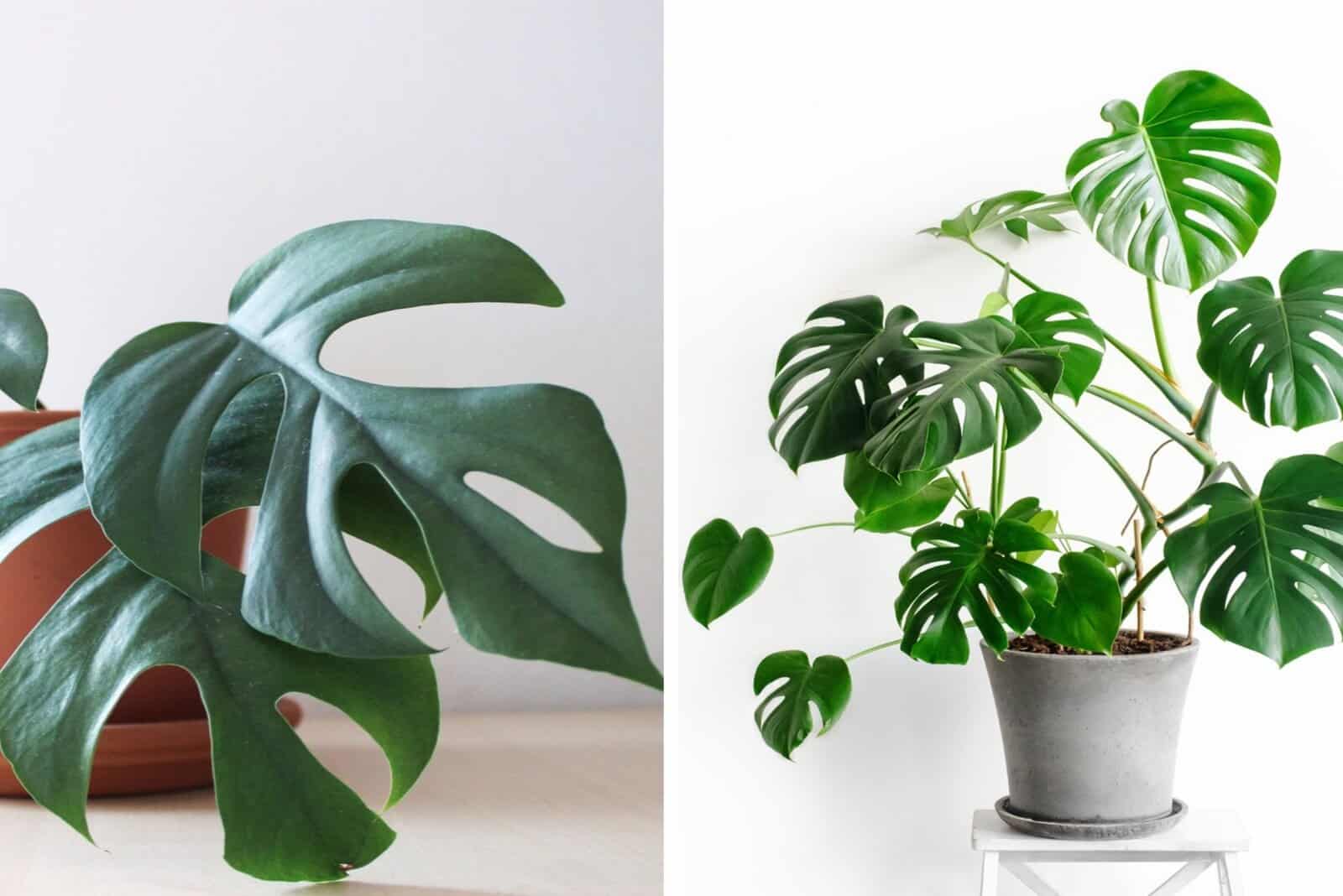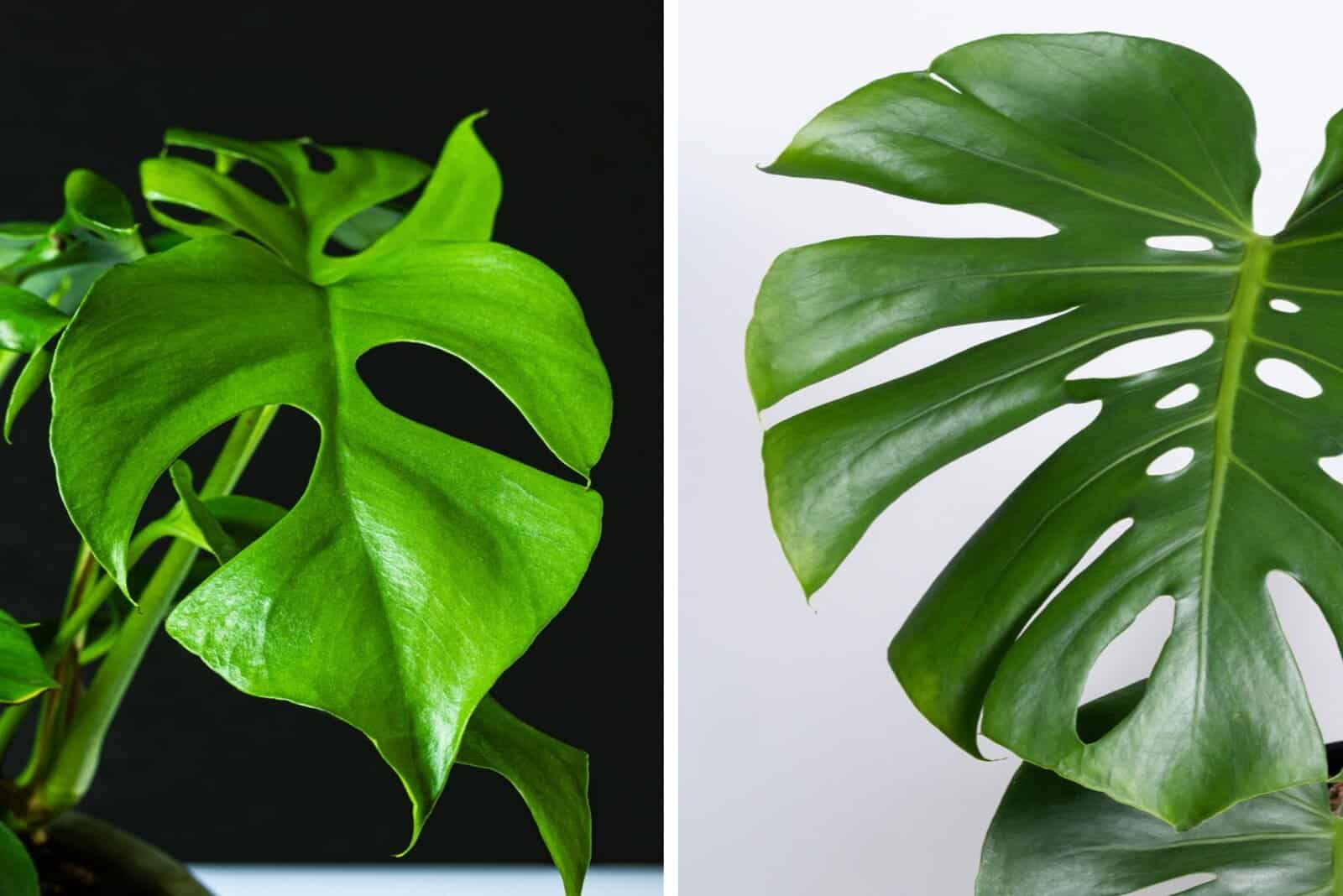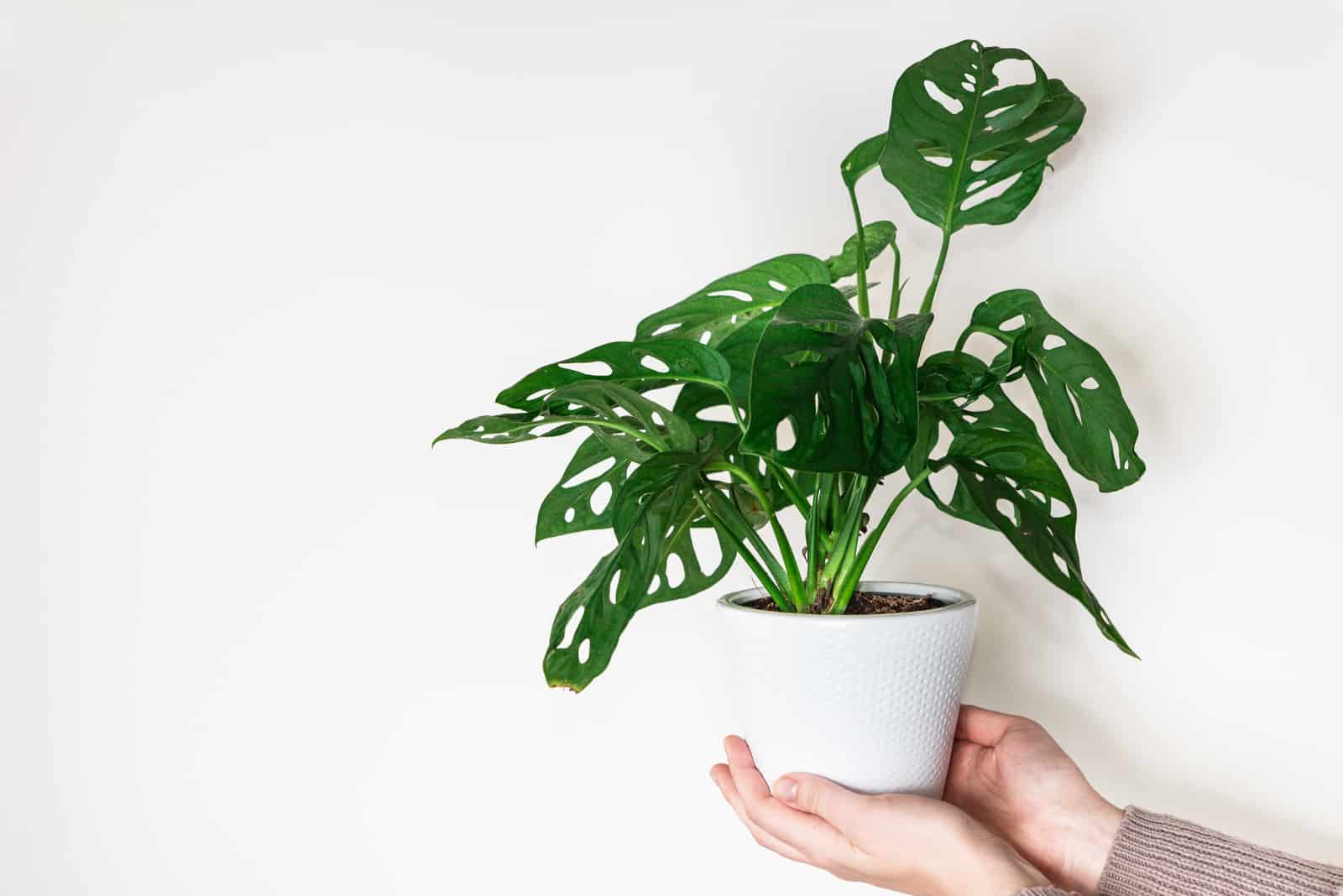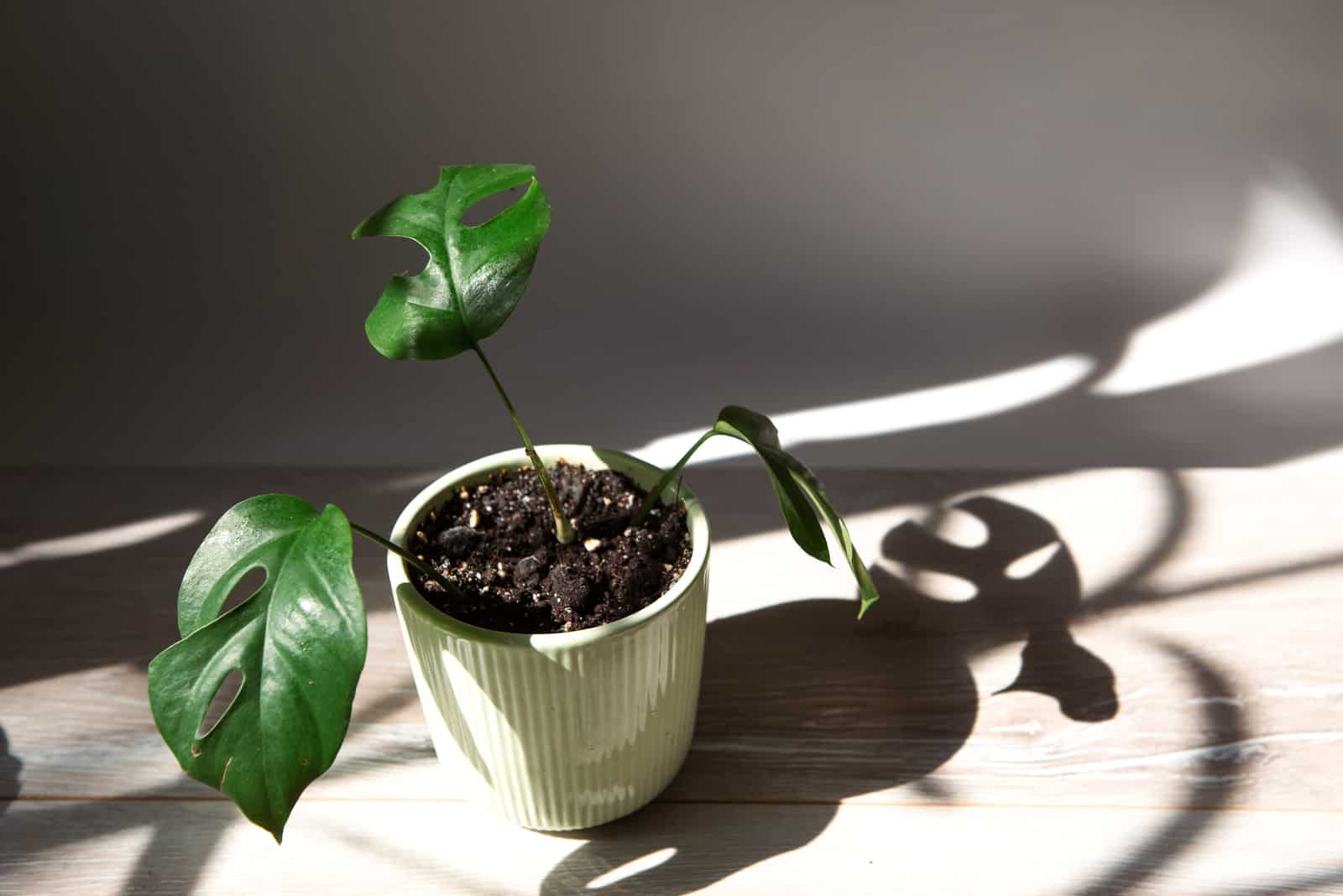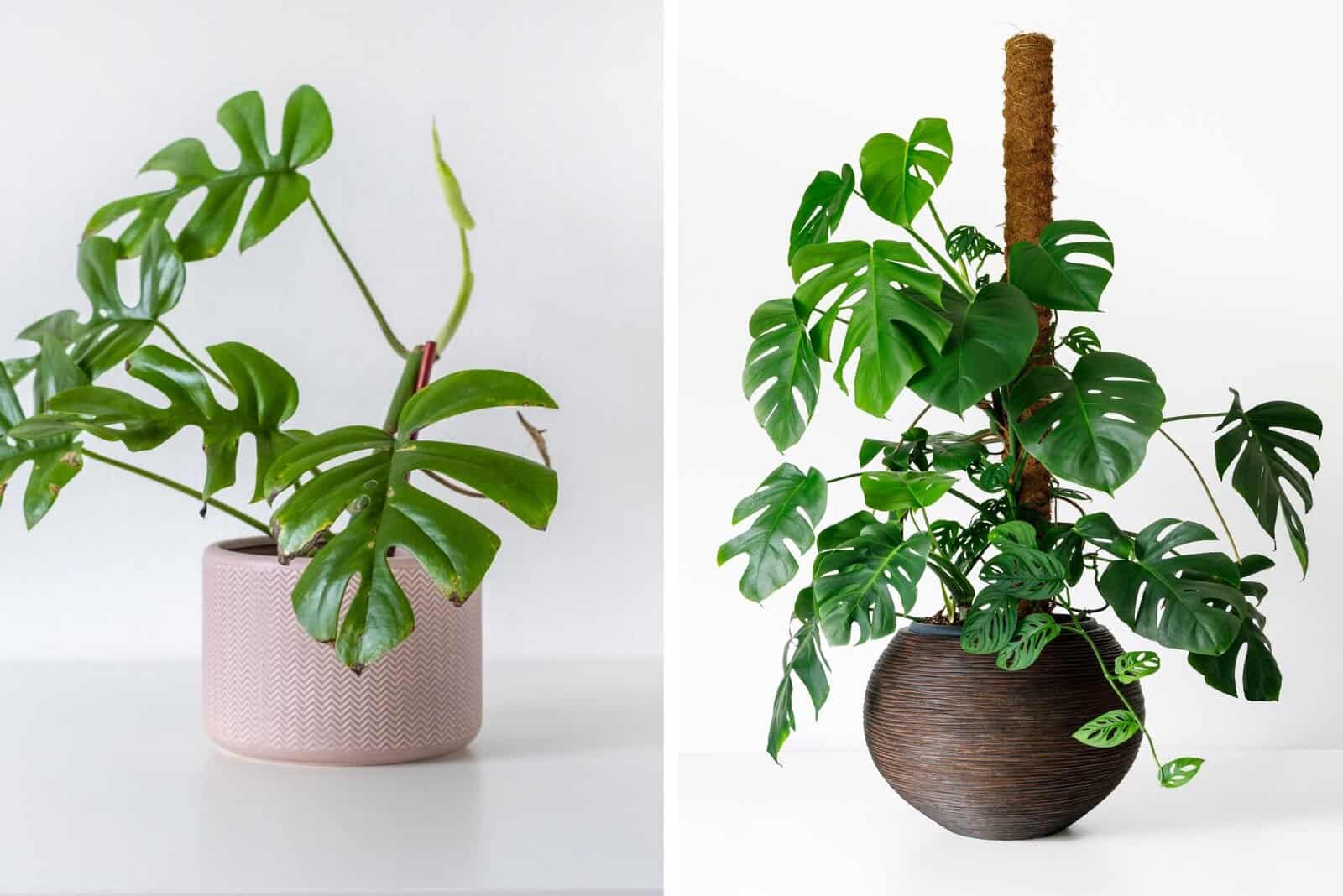Many beginner plant growers are often surprised when they see these two plants in stores next to each other with different labels, and think there is no difference between them and that the store owner has made a mistake.
It is quite hard to differentiate between Rhaphidophora Tetrasperma vs Monstera Deliciosa when they are side by side.
Familiar names that are used for these plants contribute to the general confusion.
The Rhaphidophora tetrasperma is also called Mini Monstera, Philodendron Ginny, or Philodendron Piccolo. The Monstera Deliciosa is commonly known as the Swiss Cheese plant or Split-Leaf Philodendron.
The fact is that Rhaphidophora Tetrasperma and Monstera Deliciosa are two different plants, and both are different from Philodendrons. The truth is that Mini Monstera actually resembles pothos more than any of these other plants.
This is the reason we decided to list the main differences between Rhaphidophora Tetrasperma vs Monstera Deliciosa. Hopefully this article will help you avoid any confusion!
First, take a look at this table to get some general insight.
[table id=21 /]Read on to discover everything you need to know about these plants, and you will be able to differentiate between them in no time!
9 Main Differences between Rhaphidophora Tetrasperma vs Monstera Deliciosa
Although these plants have very similar appearances, there are a surprising amount of differences between them.
1. Growth Rate
The Rhaphidophora Tetrasperma grows faster than the Monstera Deliciosa, so if you have these two houseplants side by side, you will notice that one has suddenly become taller than the other.
The Monstera Deliciosa isn’t a slow grower compared to many other Monstera plants, but it has a slower growth rate than the Rhaphidophora Tetrasperma plant.
Your Deliciosa plant can grow approximately two feet a year.
2. Taxonomy
The taxonomic classification of these plants is entirely different. Let’s take a closer look.
Both plants obviously belong to the Plantae kingdom, but the Mini Monstera belongs to the Embryophyta subkingdom and the Deliciosa belongs to the Viridiplantae subkingdom.
As far as class is concerned, the Rhaphidophora Tetrasperma belongs to the Liliopsida class, and the Monstera Deliciosa belongs to the Magnoliopsida class.
Both plants come from the Araceae family, but Ginny Philodendron belongs to Juss Araceae, and the Swiss Cheese plant belongs to the Arums of Araceae family.
The last difference in taxonomy is related to the genus. Mini Monstera’s genus is Rhaphidophora, and Monstera Deliciosa’s genus is Monstera Adans.
3. Leaves
This is the most noticeable difference between the two plants.
The Rhaphidophora Tetrasperma has smaller leaves. Its leaves won’t grow more than a foot long.
On the other hand, the Monstera Deliciosa has large leaves that can grow up to two feet in length.
During the early stages of growth, the Monstera Deliciosa already possesses holes and fenestrations (splits), but the young Rhaphidophora Tetrasperma doesn’t.
There is one more difference when it comes to the leaves. Mini Monstera leaves are light-green, and the Monstera Deliciosa has dark green leaves.
4. Size
Commonly known as the Split-Leaf Philodendron, a Monstera Deliciosa can be the same size or even taller (15 feet maximum) than the Philodendron Ginny!
The Fast-growing Rhaphidophora Tetrasperma can grow up to 12 feet tall.
Both plants are vining plants and their aerial roots are attached to the trellis, so it’s important to ensure that the moss pole supports their growth.
You may be wondering why anyone would want these plants as houseplants!
They have become indoor plants due to their looks, which are spectacular, so as soon as you lay eyes on these wonderful plants, you’ll understand why people like them in their homes.
5. Price
The Monstera Deliciosa is more expensive than the Rhaphidophora Tetrasperma.
This doesn’t necessarily mean that the Deliciosa is particularly expensive, though. It shouldn’t be mistaken for other costly Monstera plants like the Monstera Adansonii.
The Monstera Deliciosa’s price ranges from $20 to $40, whereas the Mini Monstera will cost from $5 to $20. Of course, prices may vary due to location, size, and if the plants are variegated.
Although both plants are affordable, don’t be fooled if you buy any online. As there is a significant price difference, sellers will claim that they are selling Monstera, but you will actually be getting a Mini Monstera.
6. Monstera Deliciosa Is Edible
You may have already heard about the toxicity of Monstera plants and Rhaphidophora plants, so this difference may be a little confusing!
Both plants are toxic in terms of the calcium oxalate in their sap. Still, Monstera Deliciosa‘s fruit becomes edible after one year of flowering.
The Rhaphidophora Tetrasperma does not produce fruit at all.
The name Rhaphidophora means ‘needle bearing,’ which refers to the crystals of calcium oxalate shaped like needles.
Just a reminder to keep both plants out of reach of children and pets, as they are likely to be unaware of the toxicity. If the leaves of Rhaphidophora Tetrasperma or Monstera Deliciosa are ingested, they can cause vomiting, diarrhea, or swelling.
7. Repotting
As the Rhaphidophora Tetrasperma is a fast-growing aroid, you can logically conclude that it needs to be repotted more often: almost every year or whenever you notice it has outgrown its pot.
On the other hand, the Monstera Deliciosa needs to be repotted when the roots start to outgrow the pot. Due to its slower growth rate, this is a rare occurrence.
The only exception for repotting is if the plants suffer from root rot due to overwatering. Both plants have sensitive roots, so the potting soil must be high quality. Choose well-draining soil made of potting mix which includes orchid bark or perlite.
8. Fertilizing
Neither plant needs to be fertilized, but if you do decide to fertilize them, there is a difference in what they need.
Mini Monstera is more complicated to fertilize, and its sensitive roots are susceptible to fertilizer burn. Stick to a high-quality fertilizer with a lower concentration of chemicals to prevent burning.
If you fertilize your Swiss Cheese plant, use a liquid fertilizer and apply it twice a month during the growing season and once a month after that.
9. Growing Conditions
The plant care guide is very similar for both plants, but there are slight differences in the conditions each plant needs to grow healthily and thrive.
Both plants come from tropical climates. Mini Monstera is native to Malaysia and Southern Thailand, and Monstera Deliciosa is native to South Mexico.
The plants need to be watered every 5 to 7 days during the summer.
The difference is that the Mini Monstera needs to be watered once a month during the winter seasons. The Monstera Deliciosa doesn’t need to be watered during the winter seasons at all.
Here’s a video:
Why Is the Mini Monstera Mistaken For the Swiss Cheese Plant or Split-Leaf Philodendron?
The Rhaphidophora Tetrasperma is called Mini Monstera due to its similar appearance. If you have them side by side, you will see that the Rhaphidophora Tetrasperma is a miniature version of the Monstera Deliciosa.
The similarities are in the heart-shaped leaves and general plant care requirements.
Temperature & Humidity
The best temperature for both plants ranges between 55 and 85°F. Avoid any heat sources like fireplaces or radiators.
Both plants enjoy higher humidity levels (50% to 60%). If you aren’t sure whether the humidity level is sufficient where the plants are, use a humidifier.
Light
As previously mentioned, the Rhaphidophora Tetrasperma and Monstera Deliciosa are tropical plants. This may suggest the need for more direct sun, but it’s essential to remember that tropical plants grow under the rainforest canopy, so they aren’t exposed to much direct sunlight.
Low light can cause wilting, and too little light will slow down growth. It’s best to use bright indirect light so the plants can grow faster and healthier.
Propagation
The good news is that both plants can be propagated.
There are two possible ways to get a new plant from propagation:
• Propagation by stem cutting
• Propagation by air layering
Common Pests
Many different pests can affect Rhaphidophora Tetrasperma and Monstera Deliciosa, including spider mites, scales, aphids, or mealybugs.
A pest infestation can be solved by using rubbing alcohol, insecticidal soap, or neem oil.
Mini Monstera, Monstera Deliciosa, Or Philodendron?
Now that you know the differences between Rhaphidophora Tetrasperma vs Monstera Deliciosa, it’s worth mentioning that both plants also differ from Philodendrons.
The Rhaphidophora Tetrasperma is commonly known as Philodendron Piccolo or Ginny Philodendron, and Monstera Deliciosa is also referred to as the Split-Leaf Philodendron.
Many people will use all these names for one plant. There is a slight resemblance in split leaves, the color of the leaves, and the leaves’ shape. All three plants come from the Araceae family.
However, due to their taxonomical classification and many other features in general, these plants are completely different.
Wrapping Up
Now that we have provided you with all the information you need on Rhaphidophora Tetrasperma vs Monstera Deliciosa, we’re sure you will be able to differentiate between them.
There are undoubtedly a large number of confusing terms, but the most important thing to remember is that the Rhaphidophora Tetrasperma is an entirely different plant from Monstera Deliciosa.
Another important thing is that sellers won’t be able to fool you into spending more money than you should now you can differentiate between these two lovely plants.
Until next time!
Like this post? Share or pin it for later!


